Common Questions From Primary Care Providers About MASH
Chat with MASLD AI

Hi, I am MASLD AI.
Suggested Questions :

MASLD AI 08:32 PM

In this overview on the MASLD Community Network, Oyin Penny, FNP with Premier Gastroenterology, addresses some of the most frequent questions primary care providers have when caring for patients with metabolic dysfunction–associated steatohepatitis (MASH). Learn when to screen patients for MASH, the key risk factors that should prompt evaluation, and when referral to gastroenterology or hepatology specialists is most appropriate. Oyin also explains how to monitor disease progression using non-invasive tests (NITs) such as FibroScan, MR elastography, and ELF tests. Whether you are a PCP managing patients with obesity, diabetes, hypertension, or abnormal liver imaging, this video provides essential guidance to help you identify high-risk patients earlier and optimize their care. Stay tuned for more expert insights and practical education from the MASH Community Network.
Related Podcast
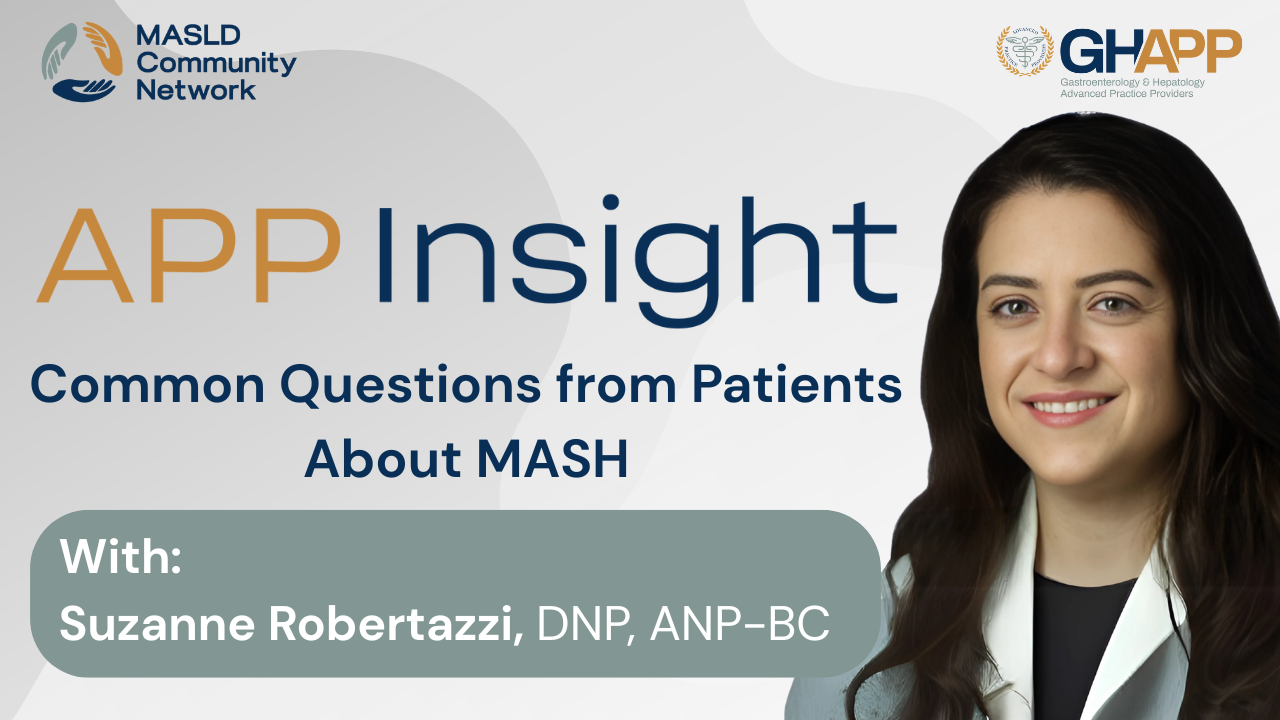
Common Questions from Patients About MASH

In this focused episode, Suzanne Robertazzi, NP at the Washington DC VA, shares expert insights on how to prevent recurrence of MASH (Metabolic-associated steatohepatitis) and MASLD (Metabolic dysfunction-associated steatotic liver disease) in liver transplant recipients. Drawing on her experience caring for post-transplant veterans, Suzanne explains that MASH can return even after liver transplantation, making ongoing metabolic management essential. She outlines key strategies including tight blood sugar and blood pressure control, especially since transplant medications can contribute to hypertension. Suzanne also emphasizes the importance of introducing regular physical activity post-recovery and adopting a Mediterranean-style diet—while tailoring nutrition guidance to meet the needs of patients in urban settings with limited access to fresh foods. This video is a must-watch for transplant teams, hepatology providers, and patients seeking to extend the life and health of their new liver through evidence-based lifestyle and clinical interventions.
Watch Now

APP Insight: Misconceptions About Liver Health

In this video, Christina Hanson, FNP-C, from South Denver Gastroenterology, dispels common myths around liver health and highlights a critical shift in how we identify and manage fatty liver disease. With the updated terminology from NAFLD/NASH to MASLD/MASH—Metabolic Dysfunction–Associated Steatotic Liver Disease—Christina explains how the new name more accurately reflects the underlying cardiometabolic drivers of the condition, such as obesity, type 2 diabetes, hypertension, and dyslipidemia. She emphasizes that liver enzyme abnormalities or incidental imaging findings should no longer be the only triggers for evaluation. Instead, clinicians—especially in primary care and endocrinology—should proactively screen high-risk patients using non-invasive tools like FIB-4 to assess for liver fibrosis. With over 50% of patients with type 2 diabetes and up to 90% of those with morbid obesity at risk for coexisting fatty liver, early identification and triage are vital to improving outcomes. This is a must-watch for healthcare providers seeking practical, guideline-driven strategies for detecting MASLD and MASH in everyday clinical practice.
Watch Now
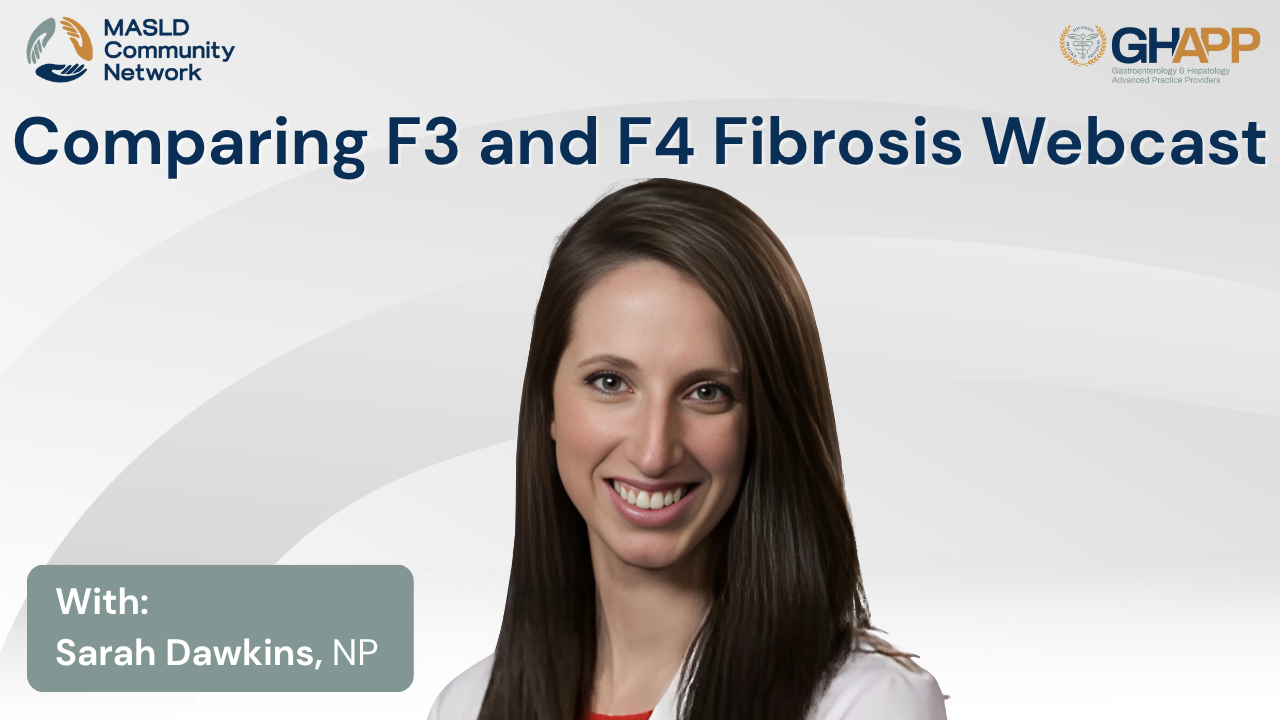
Comparing F3 and F4 Fibrosis with Sarah Dawkins

In this educational session from the MASLD Community Network, Sarah Dawkins, NP, from Duke University Medical Center, explores the critical differences between F3 and F4 fibrosis in patients with MASLD and MASH. Through real patient case studies, she highlights how non-invasive testing methods—such as FIB-4, FibroScan, ELF testing, and imaging—play a vital role in accurately staging fibrosis and guiding treatment decisions. The discussion also covers the impact of metabolic risk factors like type 2 diabetes, obesity, and hypertension, along with strategies for management that include lifestyle modifications, weight loss goals, GLP-1 therapy, and the use of resmetirom (Rezdiffra) for eligible patients. Sarah emphasizes the importance of HCC surveillance, esophageal varices screening, and ongoing monitoring to improve outcomes for patients with advanced liver disease. This session underscores why distinguishing between F3 and F4 fibrosis is essential in clinical practice and how non-invasive testing can support timely diagnosis, treatment, and long-term care planning.
Watch Now
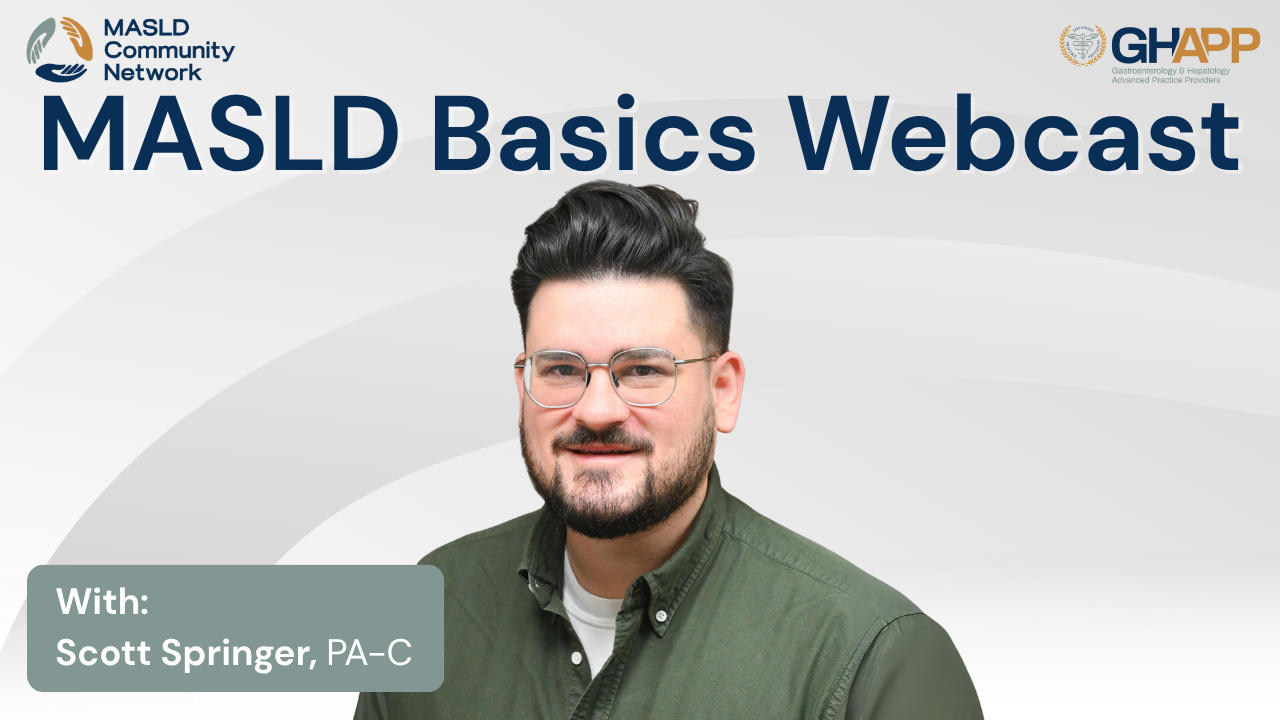
MASLD Basics With Scott Springer

Welcome to the GHAPP MASLD Community Network, where Scott Springer, PA-C, from Erie County Medical Center in Buffalo, NY, provides a comprehensive overview of the evolving landscape of steatotic liver disease. Sponsored by Madrigal Pharmaceuticals, this session breaks down the recent nomenclature shift from NAFLD/NASH to MASLD (Metabolic Dysfunction-Associated Steatotic Liver Disease) and MASH (Metabolic Dysfunction-Associated Steatohepatitis). Scott explores how overlapping etiologies like alcohol-associated liver disease (ALD) and the emerging classification of MetALD better reflect real-world patient populations. Learn about key diagnostic strategies—including the use of FIB-4, ELF score, and transient elastography—to assess fibrosis risk and guide referral to hepatology care. With a clinical case study, Scott highlights the importance of accurate staging, ruling out alternative etiologies, and understanding progression rates in high-risk patients. This session is a must-watch for GI and hepatology APPs looking to stay updated on guidelines, non-invasive diagnostics, and best practices for managing MASLD/MASH in primary and specialty settings.
Watch Now

APP Insights: Common Questions from Community GI About MASH

In this video, Lindsay Yoder, PA-C, a hepatology expert at Indiana University in Indianapolis, addresses some of the most common questions general GI providers have about diagnosing and managing MASLD (Metabolic Dysfunction–Associated Steatotic Liver Disease) and MASH (Metabolic Dysfunction–Associated Steatohepatitis). She explains the nuance of interpreting positive autoantibodies like ANA or ASMA, emphasizing that up to 30% of patients with MASLD/MASH may have non-specific reactive antibodies that are not clinically significant for autoimmune hepatitis. Lindsay walks viewers through how to evaluate serologic workups in context—considering IGG levels, ALT trends, and symptoms like fatigue or pruritus—and when to consider liver biopsy. She also shares expert guidance on when to refer patients to hepatology, particularly those with advancing fibrosis (F2-F4) or cirrhosis. Finally, she clarifies how to distinguish between MASLD and alcohol-associated liver disease (ALD), using daily alcohol consumption levels alongside cardiometabolic risk factors to help determine whether a patient falls into a MASLD, ALD, or mixed-etiology category like MetALD. This informative session is essential viewing for clinicians navigating the evolving landscape of metabolic liver disease.
Watch Now

APP Insight: Common Questions from Patients About MASH

In this insightful video, Patrick Horne, NP, from the University of Florida, addresses some of the most frequently asked questions from patients diagnosed with MASLD (Metabolic Dysfunction–Associated Steatotic Liver Disease) and MASH (Metabolic Dysfunction–Associated Steatohepatitis). Drawing from his clinical experience, he answers common concerns such as: “How did I get fatty liver if I don’t drink alcohol?”, clarifying that alcohol is not a necessary factor in developing these conditions—rather, metabolic risk factors like obesity, diabetes, hypertension, and genetic predisposition play a significant role. Patrick also dives into lifestyle recommendations, including the importance of adopting a mediterranean diet, engaging in regular physical activity, and setting realistic weight loss goals. Additionally, he tackles the nuanced question of alcohol consumption in patients with MASLD/MASH, emphasizing individualized care depending on the stage of liver disease. This session is a must-watch for both patients and providers seeking practical, evidence-based guidance on managing metabolic liver disease.
Watch Now
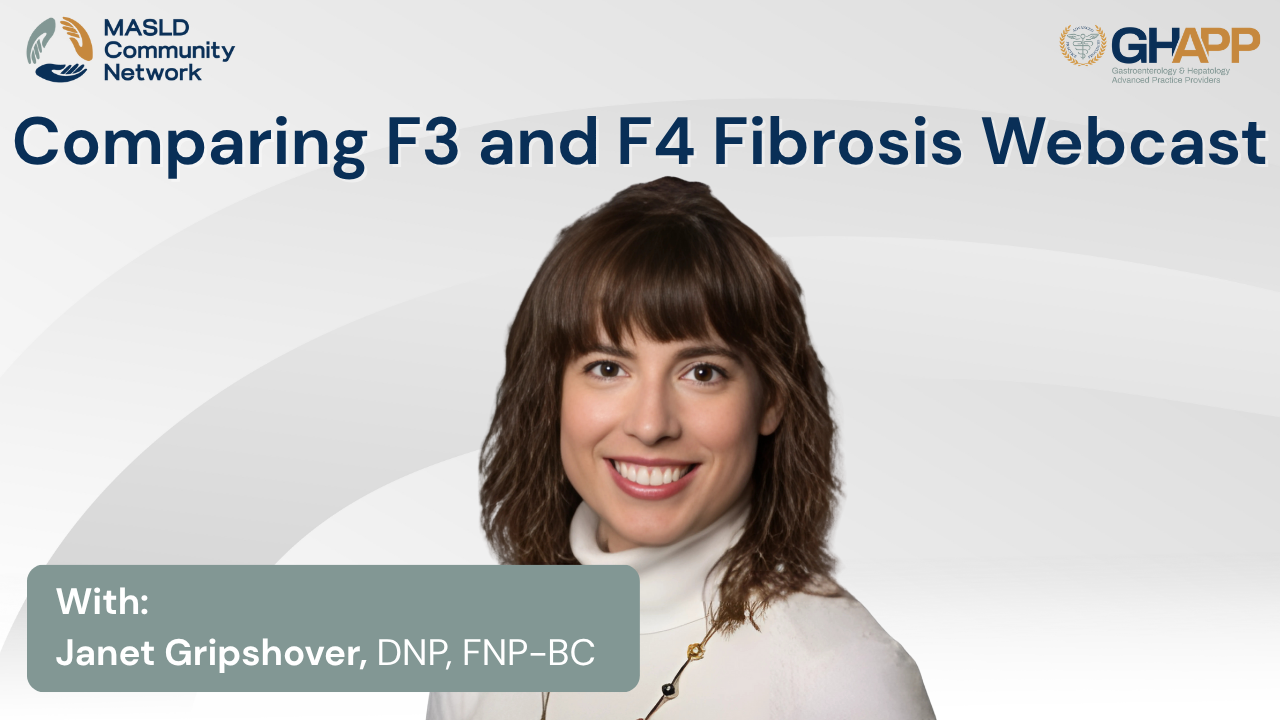
Comparing F3 and F4 Fibrosis With Janet Gripshover

Welcome to the MASLD Community Network, where experts share practical insights on diagnosing and managing metabolic dysfunction–associated steatotic liver disease (MASLD) and metabolic dysfunction–associated steatohepatitis (MASH). In this session, Janet Gripshover, NP and Nurse Manager of the Liver Transplant Program at Cedars-Sinai, explores one of the most challenging aspects of hepatology—distinguishing between F3 fibrosis and F4 cirrhosis. She explains why identifying the transition from bridging fibrosis to cirrhosis is critical for patient outcomes, treatment decisions, and cancer surveillance. Using real-world case discussions, Janet reviews non-invasive diagnostic tools such as FIB-4, transient elastography (FibroScan®), ELF testing, and lab findings, highlighting how concordant results strengthen diagnostic confidence. She also addresses risk factors like obesity, type 2 diabetes, hypertension, and sleep apnea, and emphasizes the role of lifestyle modification, GLP-1 therapies, and new treatments that can reduce fat and fibrosis progression. Importantly, she discusses why cirrhosis shifts management priorities from prevention to preservation and underscores the need for hepatocellular carcinoma (HCC) surveillance. Whether you are a hepatology provider, APP, or clinician looking to better understand the nuances of staging MASLD/MASH, this video provides a comprehensive and practical guide to diagnosing and managing advanced liver fibrosis.
Watch Now
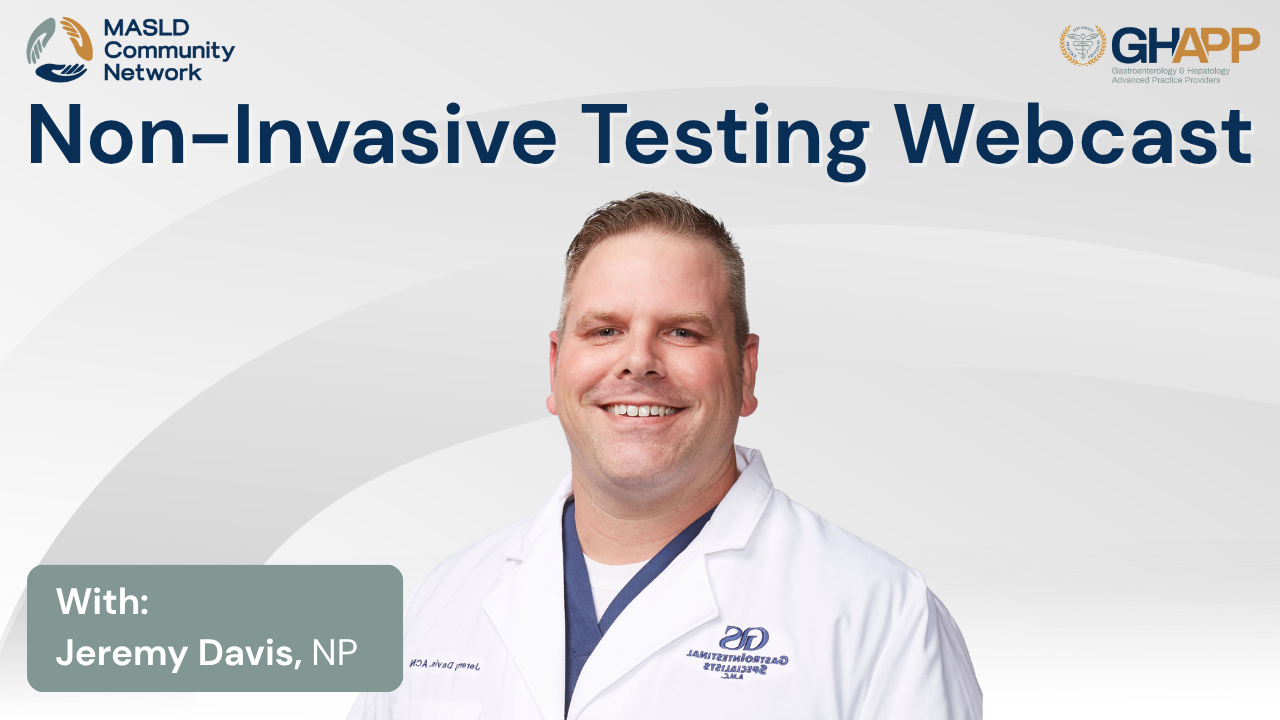
Non-Invasive Testing With Jeremy Davis

Join Jeremy Davis, NP, for a clear, clinic-ready walkthrough of non-invasive testing for MASLD/MASH. Using a real case, Jeremy shows how to risk-stratify patients starting with FIB-4 and when intermediate scores should trigger liver stiffness measurement. Learn practical cutoffs, image-quality checkpoints (valid measures, IQR/median), and common confounders (ALT/AST flares, cholestasis, recent meals, alcohol, obesity, ascites) that can overestimate stiffness. He contrasts pros/cons of VCTE vs. MRE, explains how to pair ELF with FibroScan, and maps decisions to AGA/AASLD-aligned pathways—who to refer, who to monitor, and how often to re-stage. The session closes with actionable counseling on lifestyle, weight loss targets, and cardiometabolic risk control to slow fibrosis progression while minimizing unnecessary biopsies.
Watch Now
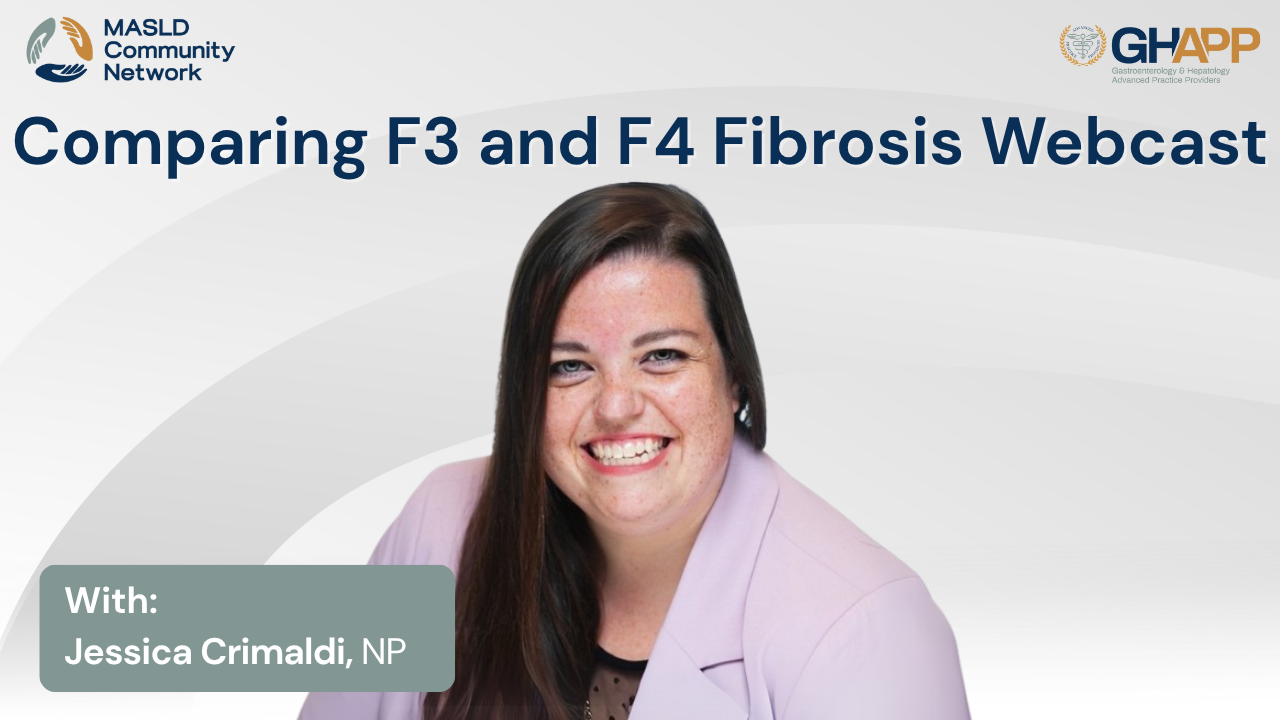
Comparing F3 and F4 Fibrosis With Jessica Crimaldi

In this educational session, Jessica Crimaldi, a nurse practitioner at Cleveland Clinic with nearly a decade of experience in gastroenterology and hepatology, walks through real-world cases comparing patients with F3 fibrosis and F4 fibrosis. She reviews how to assess disease severity using non-invasive tests like FIB-4, FibroScan, CAP scores, and ELF tests, and explains how clinical findings such as platelets, bilirubin, and INR can guide staging. Jessica highlights the differences in management between patients with advanced fibrosis versus cirrhosis, including the role of lifestyle modifications, GLP-1 therapy, statins, blood pressure control, and Resmetirom for eligible F2/F3 patients. She also discusses the importance of HCC surveillance, portal hypertension evaluation, esophageal varices screening, and long-term monitoring in cirrhosis care. This case-based learning approach offers practical insights into fatty liver disease, MASLD/MASH progression, and optimizing patient outcomes through accurate staging and tailored treatment strategies.
Watch Now
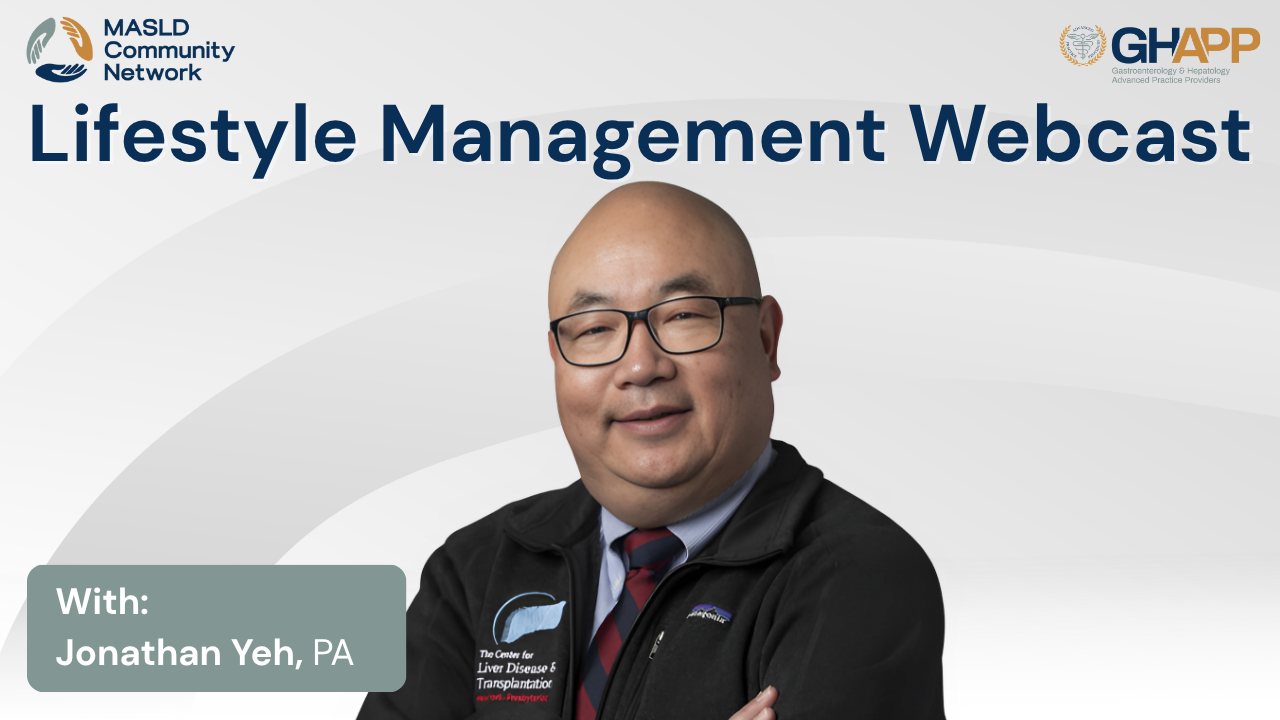
Lifestyle Management With Jonathan Yeh

In this GHAPP MASLD Community Network session, Jonathan Yeh, PA-C from Columbia University Irving Medical Center, presents a case-based discussion on the lifestyle management of MASLD (Metabolic Associated Steatotic Liver Disease) and MASH (Metabolic Associated Steatohepatitis). Through the case of a 65-year-old patient with obesity, type 2 diabetes, hypertension, and hyperlipidemia, Jonathan highlights how dietary modification, weight loss, and physical activity remain the foundation of treatment, even with new pharmacotherapies available. The presentation emphasizes the benefits of the Mediterranean diet, the importance of avoiding refined carbohydrates, and the role of both aerobic and resistance exercise in improving liver health, reducing steatosis, and potentially reversing fibrosis. Cultural considerations, patient adherence challenges, and strategies to drive behavior change are also addressed, providing clinicians with practical insights to support patients in preventing progression to advanced fibrosis or cirrhosis.
Watch Now





 August 2025
August 2025 